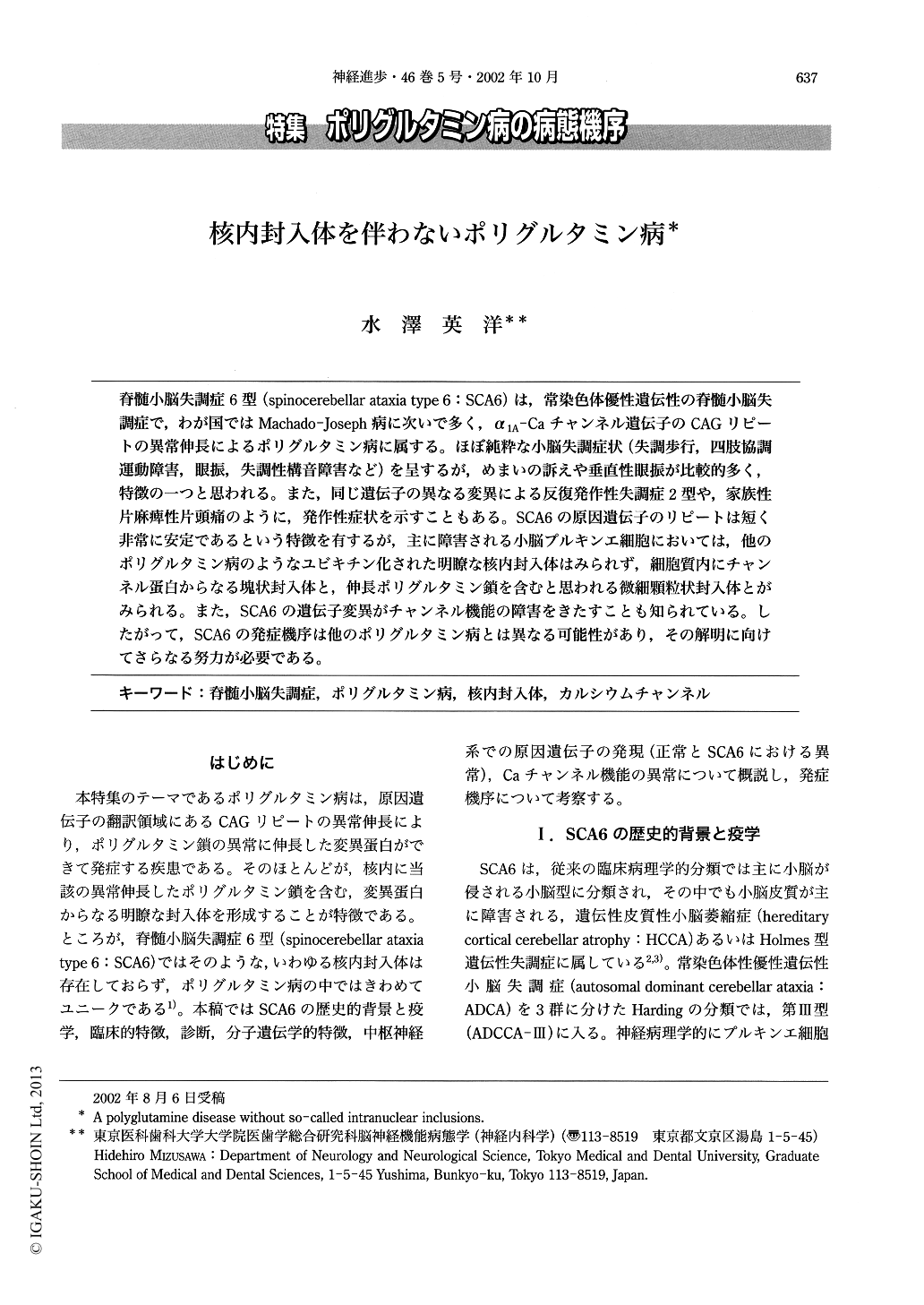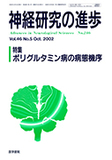Japanese
English
- 有料閲覧
- Abstract 文献概要
- 1ページ目 Look Inside
脊髄小脳失調症6型(spinocerebellar ataxia type 6:SCA6)は,常染色体優性遺伝性の脊髄小脳失調症で,わが国ではMachado-Joseph病に次いで多く,α1A-Caチャンネル遺伝子のCAGリピートの異常伸長によるポリグルタミン病に属する。ほぼ純粋な小脳失調症状(失調歩行,四肢協調運動障害,眼振,失調性構音障害など)を呈するが,めまいの訴えや垂直性眼振が比較的多く,特徴の一つと思われる。また,同じ遺伝子の異なる変異による反復発作性失調症2型や,家族性片麻痺性片頭痛のように,発作性症状を示すこともある。SCA6の原因遺伝子のリピートは短く非常に安定であるという特徴を有するが,主に障害される小脳プルキンエ細胞においては,他のポリグルタミン病のようなユビキチン化された明瞭な核内封入体はみられず,細胞質内にチャンネル蛋白からなる塊状封入体と,伸長ポリグルタミン鎖を含むと思われる微細顆粒状封入体とがみられる。また,SCA6の遺伝子変異がチャンネル機能の障害をきたすことも知られている。したがって,SCA6の発症機序は他のポリグルタミン病とは異なる可能性があり,その解明に向けてさらなる努力が必要である。
Spinocerebellar ataxia type 6 (SCA6) had initially been reported to be an hereditary ataxia caused by a small expansion of CAG repeat of α1A-Ca channel gene (CACNA1A). We had independently found a gene locus for Japanese families of Holmes type hereditary ataxia or autosomal dominant cerebellar ataxia type III (Harding), which turned to be SCA6. Although SCA6 belongs to so-called CAG-repeat diseases or polyglutamine diseases because age at onset is inversely correlated with repeat length, there are some features distinct from those of other polyglutamine diseases.

Copyright © 2002, Igaku-Shoin Ltd. All rights reserved.


